Assessing Risks in Dairy Supply Chain Systems: A System Dynamics Approach
Abstract
:1. Introduction
2. Literature Review
System Dynamics Modeling on Food Supply Chain Risk Management
| Author (s) | Year | Methodology | Risks Involve |
|---|---|---|---|
| Bashiri et al. [18] | 2021 | SD and TOPSIS |
|
| Estay et al. [33] | 2021 | Review paper for research used SD |
|
| Rathore et al. [34] | 2020 | SD and AHP-Grey TOPSIS |
|
| Puertas et al. [39] | 2020 | TOPSIS, Elimination et Choix Traduisant la Realité (ELECTRE), Cross-Efficiency (CE) |
|
| Zhu and Krikke [35] | 2020 | SD |
|
| Mithun Ali et al. [3] | 2019 | Pareto analysis and DEMATEL |
|
| Behzadi et al. [40] | 2018 | Review paper |
|
| Arwani et al. [36] | 2018 | SD |
|
| Liu et al. [41] | 2018 | SD |
|
| Orjuela-Castro et al. [37] | 2017 | SD |
|
| Nakandala et al. [42] | 2017 | Fuzzy logic and hierarchical holographic modelling |
|
| Prakash et al. [43] | 2017 | ISM |
|
| Tsolakis and Srai [44] | 2017 | SD |
|
3. Research Method
4. Problem Articulation
4.1. Risk
4.1.1. Operational Risks
4.1.2. Market Risks
4.1.3. Managerial Level Risks
4.1.4. External Environment Risks
4.2. Risk Dimensions
- Probability/likelihood of a risk occurrence.
- Impact/consequence of a risk event.
- The severity of an adverse risk when that risk does occur, which is calculated by multiplying the probability by the impact.
5. Developing Causal Loop Diagram for Cheese Products System
5.1. The CLD for Risk Factors
5.2. The Dynamic Productions System
5.3. The Dynamic Transportation System
5.4. The Dynamic Retail System
6. SFD Model Development
Initial Operating Conditions
7. Model Validation and Verification
8. Risk Integration
9. Simulation and Results
9.1. Scenario 1: Natural Disaster
9.2. Scenario 2: Diseases
9.3. Scenario 3: Labour Strikes
9.4. Scenario 4: Demand Fluctuation
9.5. Scenario 5: Supply Quality Risk
10. Discussion
11. Conclusions and Future Research
Author Contributions
Funding
Institutional Review Board Statement
Informed Consent Statement
Data Availability Statement
Conflicts of Interest
References
- Vlajic, J.V.; Van Lokven, S.W.M.; Haijema, R.; Van Der Vorst, J.G.A.J. Using Vulnerability Performance Indicators to Attain Food Supply Chain Robustness. Prod. Plan. Control 2013, 24, 785–799. [Google Scholar] [CrossRef]
- Ali, S.M.; Rahman, M.H.; Tumpa, T.J.; Moghul Rifat, A.A.; Paul, S.K. Examining Price and Service Competition among Retailers in a Supply Chain under Potential Demand Disruption. J. Retail. Consum. Serv. 2018, 40, 40–47. [Google Scholar] [CrossRef]
- Mithun Ali, S.; Moktadir, M.A.; Kabir, G.; Chakma, J.; Rumi, M.J.U.; Islam, M.T. Framework for Evaluating Risks in Food Supply Chain: Implications in Food Wastage Reduction. J. Clean. Prod. 2019, 228, 786–800. [Google Scholar] [CrossRef]
- Govindan, K. Sustainable Consumption and Production in the Food Supply Chain: A Conceptual Framework. Int. J. Prod. Econ. 2018, 195, 419–431. [Google Scholar] [CrossRef]
- Wang, Z.; van der Fels-Klerx, H.J.; Lansink, A.G.J.M.O. Optimization of Sampling for Monitoring Chemicals in the Food Supply Chain Using a Risk-Based Approach: The Case of Aflatoxins and Dioxins in the Dutch Dairy Chain. Risk Anal. 2020, 40, 2539–2560. [Google Scholar] [CrossRef] [PubMed]
- Van Der Vorst, J.G.A.J.; Tromp, S.O.; Van Der Zee, D.J. Simulation Modelling for Food Supply Chain Redesign; Integrated Decision Making on Product Quality, Sustainability and Logistics. Int. J. Prod. Res. 2009, 47, 6611–6631. [Google Scholar] [CrossRef]
- van der Vorst, J.G.A.J.; van Kooten, O.; Luning, P.A. Towards a Diagnostic Instrument to Identify Improvement Opportunities for Quality Controlled Logistics in Agrifood Supply Chain Networks. Int. J. Food Syst. Dyn. 2011, 2, 94–105. [Google Scholar] [CrossRef]
- Ali, S.M.; Nakade, K. Optimal Ordering Policies in a Multi-Sourcing Supply Chain with Supply and Demand Disruptions-a CVaR Approach. Int. J. Logist. Syst. Manag. 2017, 28, 180–199. [Google Scholar] [CrossRef]
- Singh, A.; Shukla, N.; Mishra, N. Social Media Data Analytics to Improve Supply Chain Management in Food Industries. Transp. Res. Part E Logist. Transp. Rev. 2018, 114, 398–415. [Google Scholar] [CrossRef]
- Kumar, A.; Mangla, S.K.; Kumar, P.; Song, M. Mitigate Risks in Perishable Food Supply Chains: Learning from COVID-19. Technol. Forecast. Soc. Chang. 2021, 166, 120643. [Google Scholar] [CrossRef]
- Göbel, C.; Langen, N.; Blumenthal, A.; Teitscheid, P.; Ritter, G. Cutting Food Waste through Cooperation along the Food Supply Chain. Sustainability 2015, 7, 1429–1445. [Google Scholar] [CrossRef] [Green Version]
- Tang, C.; Tomlin, B. The Power of Flexibility for Mitigating Supply Chain Risks. Int. J. Prod. Econ. 2008, 116, 12–27. [Google Scholar] [CrossRef] [Green Version]
- Ge, H.; Nolan, J.; Gray, R.; Goetz, S.; Han, Y. Supply Chain Complexity and Risk Mitigation—A Hybrid Optimization–Simulation Model. Int. J. Prod. Econ. 2016, 179, 228–238. [Google Scholar] [CrossRef] [Green Version]
- Currie, D.J.; Smith, C.; Jagals, P. The Application of System Dynamics Modelling to Environmental Health Decision-Making and Policy—A Scoping Review. BMC Public Health 2018, 18, 402. [Google Scholar] [CrossRef] [PubMed] [Green Version]
- Agius, S.J. Qualitative Research: Its Value and Applicability. Psychiatrist 2013, 37, 204–206. [Google Scholar] [CrossRef] [Green Version]
- Marshall, D.A.; Burgos-Liz, L.; Ijzerman, M.J.; Osgood, N.D.; Padula, W.V.; Higashi, M.K.; Wong, P.K.; Pasupathy, K.S.; Crown, W. Applying Dynamic Simulation Modeling Methods in Health Care Delivery Research—The SIMULATE Checklist: Report of the ISPOR Simulation Modeling Emerging Good Practices Task Force. Value Health 2015, 18, 5–16. [Google Scholar] [CrossRef] [Green Version]
- Kelly, R.A.; Jakeman, A.J.; Barreteau, O.; Borsuk, M.E.; ElSawah, S.; Hamilton, S.H.; Henriksen, H.J.; Kuikka, S.; Maier, H.R.; Rizzoli, A.E.; et al. Selecting among Five Common Modelling Approaches for Integrated Environmental Assessment and Management. Environ. Model. Softw. 2013, 47, 159–181. [Google Scholar] [CrossRef]
- Bashiri, M.; Tjahjono, B.; Lazell, J.; Ferreira, J.; Perdana, T. The Dynamics of Sustainability Risks in the Global Coffee Supply Chain: A Case of Indonesia–UK. Sustainability 2021, 13, 589. [Google Scholar] [CrossRef]
- Demirel, G. Aggregated and Disaggregated Modeling Approaches to Multiple Agent Dynamics. In Proceedings of the 24th International Conference of the System Dynamics Society, Nijmegen, The Netherlands, 23–27 July 2006; Volume 30. [Google Scholar]
- Atkinson, J.A.; Page, A.; Wells, R.; Milat, A.; Wilson, A. A Modelling Tool for Policy Analysis to Support the Design of Efficient and Effective Policy Responses for Complex Public Health Problems. Implement. Sci. 2015, 10, 1–9. [Google Scholar] [CrossRef] [Green Version]
- Maidstone, R. Discrete Event Simulation, System Dynamics and Agent Based Simulation: Discussion and Comparison. System 2012, 1, 1–6. [Google Scholar]
- Mehrjoo, M.; Pasek, Z.J. Risk Assessment for the Supply Chain of Fast Fashion Apparel Industry: A System Dynamics Framework. Int. J. Prod. Res. 2016, 54, 28–48. [Google Scholar] [CrossRef]
- Carías, J.F.; Labaka, L.; Sarriegi, J.M.; Hernantes, J. Defining a Cyber Resilience Investment Strategy in an Industrial Internet of Things Context. Sensors 2019, 19, 138. [Google Scholar] [CrossRef] [PubMed] [Green Version]
- Ghadge, A.; Dani, S.; Kalawsky, R. A Systems Approach for Modelling Supply Chain Risks. Supply Chain Manag. Int. J. 2013, 5, 523–538. [Google Scholar] [CrossRef] [Green Version]
- Zhao, G.; Liu, S.; Lopez, C.; Chen, H.; Lu, H.; Mangla, S.K.; Elgueta, S. Risk Analysis of the Agri-Food Supply Chain: A Multi-Method Approach. Int. J. Prod. Res. 2020, 58, 4851–4876. [Google Scholar] [CrossRef]
- Gokarn, S.; Kuthambalayan, T.S. Analysis of Challenges Inhibiting the Reduction of Waste in Food Supply Chain. J. Clean. Prod. 2017, 168, 595–604. [Google Scholar] [CrossRef]
- Fredriksson, A.; Liljestrand, K. Capturing Food Logistics: A Literature Review and Research Agenda. Int. J. Logist. Res. Appl. 2015, 18, 16–34. [Google Scholar] [CrossRef]
- Baryannis, G.; Validi, S.; Dani, S.; Antoniou, G. Supply Chain Risk Management and Artificial Intelligence: State of the Art and Future Research Directions. Int. J. Prod. Res. 2019, 57, 2179–2202. [Google Scholar] [CrossRef]
- Garnett, P.; Doherty, B.; Heron, T. Vulnerability of the United Kingdom’s Food Supply Chains Exposed by COVID-19. Nat. Food 2020, 1, 315–318. [Google Scholar] [CrossRef]
- Harvey, F. Coronavirus Pandemic Will Cause Famine of Biblical Proportions. Available online: https://www.theguardian.com/global-development/2020/apr/21/coronavirus-pandemic-will-cause-famine-of-biblical-proportions (accessed on 25 July 2022).
- Tavakoli Haji Abadi, Y.; Avakh Darestani, S. Evaluation of Sustainable Supply Chain Risk: Evidence from the Iranian Food Industry. J. Sci. Technol. Policy Manag. 2021. [Google Scholar] [CrossRef]
- Ülkü, M.A.; Akgün, M.; Venkatadri, U.; Diallo, C.; Chadha, S.S. Managing Environmental and Operational Risks for Sustainable Cotton Production Logistics: System Dynamics Modelling for a Textile Company. Logistics 2020, 4, 34. [Google Scholar] [CrossRef]
- Estay, S.; Alberto, D.; Pankaj Daniel Sepulveda Estay, G. Review of the Application of System Dynamics to Problems in Food Supply Chains. In Proceedings of the 38 International Conference of System Dynamics Society, Online, 20–24 July 2020. [Google Scholar]
- Rathore, R.; Thakkar, J.J.; Jha, J.K. Impact of Risks in Foodgrains Transportation System: A System Dynamics Approach. Int. J. Prod. Res. 2020, 59, 1814–1833. [Google Scholar] [CrossRef]
- Zhu, Q.; Krikke, H. Managing a Sustainable and Resilient Perishable Food Supply Chain (PFSC) after an Outbreak. Sustainability 2020, 12, 5004. [Google Scholar] [CrossRef]
- Arwani, M.; Santoso, I.; Rahmatin, N. A Dynamic Model for Managing Adulteration Risks of Dairy Industry Supply Chain in Indonesia. Adv. Food Sci. Sustain. Agric. Agroind. Eng. 2018, 1, 1–8. [Google Scholar] [CrossRef]
- Orjuela-Castro, J.A.; Diaz Gamez, G.L.; Bernal Celemín, M.P. Model for Logistics Capacity in the Perishable Food Supply Chain. Commun. Comput. Inf. Sci. 2017, 742, 225–237. [Google Scholar] [CrossRef]
- Azizsafaei, M.; Sarwar, D.; Fassam, L.; Khandan, R.; Hosseinian-Far, A. A Critical Overview of Food Supply Chain Risk Management. In Proceedings of the Cybersecurity, Privacy and Freedom Protection in the Connected World; Springer: Warsaw, Poland, 2021; pp. 413–429. [Google Scholar]
- Puertas, R.; Marti, L.; Garcia-Alvarez-coque, J.M. Food Supply without Risk: Multicriteria Analysis of Institutional Conditions of Exporters. Int. J. Environ. Res. Public Health 2020, 17, 3432. [Google Scholar] [CrossRef] [PubMed]
- Behzadi, G.; O’Sullivan, M.J.; Olsen, T.L.; Zhang, A. Agribusiness Supply Chain Risk Management: A Review of Quantitative Decision Models. Omega 2018, 79, 21–42. [Google Scholar] [CrossRef]
- Liu, X.; Arthanari, T.; Shi, Y. Making Dairy Supply Chains Robust against Corruption Risk: A Systemic Exploratory Study. Int. J. Logist. Manag. 2019, 30, 1078–1100. [Google Scholar] [CrossRef]
- Nakandala, D.; Lau, H.; Zhao, L. Development of a Hybrid Fresh Food Supply Chain Risk Assessment Model. Int. J. Prod. Res. 2017, 55, 4180–4195. [Google Scholar] [CrossRef]
- Prakash, S.; Soni, G.; Rathore, A.P.S.; Singh, S. Risk Analysis and Mitigation for Perishable Food Supply Chain: A Case of Dairy Industry. Benchmarking 2017, 24, 2–23. [Google Scholar] [CrossRef]
- Tsolakis, N.; Srai, J.S. A System Dynamics Approach to Food Security through Smallholder Farming in the UK. Chem. Eng. Trans. 2017, 57, 2023–2028. [Google Scholar] [CrossRef]
- Forrester, J. Industrial Dynamics; MIT Press: Cambridge, MA, USA, 1961. [Google Scholar]
- Rebs, T.; Brandenburg, M.; Seuring, S. System Dynamics Modeling for Sustainable Supply Chain Management: A Literature Review and Systems Thinking Approach. J. Clean. Prod. 2019, 208, 1265–1280. [Google Scholar] [CrossRef]
- Angerhofer, B.J.; Angelides, M.C. System Dynamics Modelling in Supply Chain Management: Research Review. Winter Simul. Conf. Proc. 2000, 1, 342–351. [Google Scholar] [CrossRef]
- Garbolino, E.; Chery, J.P.; Guarnieri, F. A Simplified Approach to Risk Assessment Based on System Dynamics: An Industrial Case Study. Risk Anal. 2016, 36, 16–29. [Google Scholar] [CrossRef] [PubMed] [Green Version]
- Morecroft John, D.W.A. Strategic Modelling and Business Dynamics: A Feedback Systems Approach, 2nd ed.; Wiley: New York, NY, USA, 2015; ISBN 1-118-84470-X. [Google Scholar]
- Gonçalves, P.; Moshtari, M. The Impact of Information Visibility on Ordering Dynamics in a Supply Chain: A Behavioral Perspective. Syst. Dyn. Rev. 2021, 37, 126–154. [Google Scholar] [CrossRef]
- Yeo, G.T.; Pak, J.Y.; Yang, Z. Analysis of Dynamic Effects on Seaports Adopting Port Security Policy. Transp. Res. Part A Policy Pract. 2013, 49, 285–301. [Google Scholar] [CrossRef]
- Sterman, J. Business Dynamics: Systems Thinking and Modeling for a Complex World. J. Oper. Res. Soc. 2002, 53, 472–473. [Google Scholar]
- Ali, I.; Gurd, B. Managing Operational Risks through Knowledge Sharing in Food Supply Chains. Knowl. Process Manag. 2020, 27, 322–331. [Google Scholar] [CrossRef]
- Xiaoping, W. Food Supply Chain Safety Risk Evaluation Based on AHP Fuzzy Integrated Evaluation Method. Int. J. Secur. Its Appl. 2016, 10, 233–244. [Google Scholar] [CrossRef]
- Marley, K.A.; Ward, P.T.; Hill, J.A. Mitigating Supply Chain Disruptions—A Normal Accident Perspective. Supply Chain Manag. 2014, 19, 142–152. [Google Scholar] [CrossRef]
- Aung, M.M.; Chang, Y.S. Traceability in a Food Supply Chain: Safety and Quality Perspectives. Food Control 2014, 39, 172–184. [Google Scholar] [CrossRef]
- Opara, L.U.; Vol, E.; Opara, L.U.; Vol, E. Traceability in Agriculture and Food Supply Chain: A Review of Basic Concepts, Technological Implications, and Future Prospects. Food Agric. Environ. 2003, 1, 101–106. [Google Scholar]
- Christopher, M.; Lee, H. Mitigating Supply Chain Risk through Improved Confidence. Int. J. Phys. Distrib. Logist. Manag. 2004, 34, 388–396. [Google Scholar] [CrossRef] [Green Version]
- Jaffee, S.; Siegel, P.; Andrews, C. Agriculture and Rural Development Discussion Paper 47 Rapid Agricultural Supply Chain Risk Assessment: A Conceptual Framework; Word Bank: Washington, DC, USA, 2010; Volume 55. [Google Scholar]
- Manders, J.H.M.; Caniëls, M.C.J.; Ghijsen, P.W.T. Exploring Supply Chain Flexibility in a FMCG Food Supply Chain. J. Purch. Supply Manag. 2016, 22, 181–195. [Google Scholar] [CrossRef]
- Stoyanova, A. Impact of External and Internal Circumstances on Food Safety Management. Trakia J. Sci. 2019, 17, 386–394. [Google Scholar] [CrossRef]
- Yakovleva, N. Measuring the Sustainability of the Food Supply Chain: A Case Study of the UK. J. Environ. Policy Plan. 2007, 9, 75–100. [Google Scholar] [CrossRef]
- Gov.UK FAQ—Strikes, Lockout & Picketing. Available online: http://www.alrb.gov.ab.ca/faq_strikes.html (accessed on 31 May 2022).
- Ortiz-Barrios, M.; Miranda-De la Hoz, C.; López-Meza, P.; Petrillo, A.; De Felice, F. A Case of Food Supply Chain Management with AHP, DEMATEL, and TOPSIS. J. Multi-Criteria Decis. Anal. 2020, 27, 104–128. [Google Scholar] [CrossRef]
- Chavez, P.J.A.; Seow, C. Managing Food Quality Risk in Global Supply Chain: A Risk Management Framework. Int. J. Eng. Bus. Manag. 2012, 4, 3. [Google Scholar] [CrossRef]
- Orengo Serra, K.L.; Sanchez-Jauregui, M. Food Supply Chain Resilience Model for Critical Infrastructure Collapses Due to Natural Disasters. Br. Food J. 2021, 124, 14–34. [Google Scholar] [CrossRef]
- Reddy, V.R.; Singh, S.K.; Anbumozhi, V. Food Supply Chain Disruption Due to Natural Disasters: Entities, Risks, and Strategies for Resilience. ERIA Discuss. Pap. 2016, 18, 1–37. [Google Scholar]
- Umar, M.; Wilson, M. Supply Chain Resilience: Unleashing the Power of Collaboration in Disaster Management. Sustainability 2021, 13, 10573. [Google Scholar] [CrossRef]
- Hobbs, J.E. Food Supply Chains during the COVID-19 Pandemic. Can. J. Agric. Econ. 2020, 68, 171–176. [Google Scholar] [CrossRef] [Green Version]
- Clegg, R. Labour Disputes in the UK—Office for National Statistics. Available online: https://www.ons.gov.uk/employmentandlabourmarket/peopleinwork/workplacedisputesandworkingconditions/articles/labourdisputes/2018 (accessed on 31 May 2022).
- Li, H.; Li, D.; Jiang, D. Optimising the Configuration of Food Supply Chains. Int. J. Prod. Res. 2021, 59, 3722–3746. [Google Scholar] [CrossRef]
- Ren, J.; Jenkinson, I.; Wang, J.; Xu, D.L.; Yang, J.B. An Offshore Risk Analysis Method Using Fuzzy Bayesian Network. J. Offshore Mech. Arct. Eng. 2009, 131, 1–12. [Google Scholar] [CrossRef]
- Mokhtari, K.; Ren, J.; Roberts, C.; Wang, J. Decision Support Framework for Risk Management on Sea Ports and Terminals Using Fuzzy Set Theory and Evidential Reasoning Approach. Expert Syst. Appl. 2012, 39, 5087–5103. [Google Scholar] [CrossRef]
- Rausand, M. Risk Assessment Theory, Methods, and Applications, 1st ed.; Statistics in Practice; Wiley: Hoboken, NJ, USA, 2011; ISBN 1-118-28111-X. [Google Scholar]
- Li, C.; Ren, J.; Wang, H. A System Dynamics Simulation Model of Chemical Supply Chain Transportation Risk Management Systems. Comput. Chem. Eng. 2016, 89, 71–83. [Google Scholar] [CrossRef]
- Vlachos, D.; Georgiadis, P.; Iakovou, E. A System Dynamics Model for Dynamic Capacity Planning of Remanufacturing in Closed-Loop Supply Chains. Comput. Oper. Res. 2007, 34, 367–394. [Google Scholar] [CrossRef]
- Department for Environment Food & Rural Affairs of United Kingdom Family Food Datasets—GOV.UK. Available online: https://www.gov.uk/government/statistical-data-sets/family-food-datasets (accessed on 5 September 2021).
- Clarke, H. Change in UK Consumer Preferences Show Need for More Cheese|AHDB. Available online: https://ahdb.org.uk/news/change-in-UK-consumer-preferences-for-more-cheese (accessed on 5 September 2021).
- Ivanova, N.; Gugleva, V.; Dobreva, M.; Pehlivanov, I.; Stefanov, S.; Andonova, V. The Dairy Industry: Process, Monitoring, Standards, and Quality. Intech 2016, i, 13. [Google Scholar]
- Shafiee, F.; Kazemi, A.; Jafarnejad Chaghooshi, A.; Sazvar, Z.; Amoozad Mahdiraji, H. A Robust Multi-Objective Optimization Model for Inventory and Production Management with Environmental and Social Consideration: A Real Case of Dairy Industry. J. Clean. Prod. 2021, 294, 126230. [Google Scholar] [CrossRef]
- Feng, S.; Patton, M. Labour Productivity in the Dairy Sector. Available online: https://www.afbini.gov.uk/sites/afbini.gov.uk/files/publications/Labour%20Productivity%20in%20the%20Dairy%20Sector_0.pdf (accessed on 25 July 2022).
- Giffin, M.; Baker, D.; Eyeson-Annan, M.; Jorm, L. Dairy Processing Equipment Market—Global Forecast To 2020. N. S. W. Public Health Bull. 2005, 16, 7. [Google Scholar] [CrossRef]
- Georgiadis, P.; Vlachos, D.; Iakovou, E. A System Dynamics Modeling Framework for the Strategic Supply Chain Management of Food Chains. J. Food Eng. 2005, 70, 351–364. [Google Scholar] [CrossRef]
- Yoon, J.; Yildiz, H.; Talluri, S.S. Risk Management Strategies in Transportation Capacity Decisions: An Analytical Approach. J. Bus. Logist. 2016, 37, 364–381. [Google Scholar] [CrossRef]
- Gonçalves, P.; Hines, J.; Sterman, J. The Impact of Endogenous Demand on Push-Pull Production System. Syst. Dyn. Rev. 2005, 21, 187–216. [Google Scholar] [CrossRef]
- Elkady, G. A Decision Support Framework to Assess Grocery Retail Supply Chain Collaboration: A System Dynamics Modelling Approach. Int. J. Innov. Manag. Technol. 2014, 5, 232. [Google Scholar] [CrossRef]
- Gastaldi, M.; Rossi, R.; Vescovi, R. Analysing the Capacity of a Transportation Network. A General Theoretical Approach. Eur. Transp.-Trasp. Eur. 2013, 53, 8. [Google Scholar]
- Peng, M.; Peng, Y.; Chen, H. Post-Seismic Supply Chain Risk Management: A System Dynamics Disruption Analysis Approach for Inventory and Logistics Planning. Comput. Oper. Res. 2014, 42, 14–24. [Google Scholar] [CrossRef]
- Barlas, Y. System Dynamics: Systemic Feedback Modeling for Policy Analysis. System 2007, 59, 1–68. [Google Scholar]
- Lin, G.; Palopoli, M.; Dadwal, V. From Causal Loop Diagrams to System Dynamics Models in a Data-Rich Ecosystem BT—Leveraging Data Science for Global Health; Celi, L.A., Majumder, M.S., Ordóñez, P., Osorio, J.S., Paik, K.E., Somai, M., Eds.; Springer International Publishing: Cham, Switzerland, 2020; pp. 77–98. ISBN 978-3-030-47994-7. [Google Scholar]
- Márquez, A.C.; Marquez, A.C. Dynamic Modelling for Supply Chain Management: Dealing with Front-End, Back-End and Integration Issues 1. Aufl.; Springer Verlag London Limited: London, UK, 2010. [Google Scholar]
- Barlas, Y.; Gunduz, B. Demand Forecasting and Sharing Strategies to Reduce Fluctuations and the Bullwhip Effect in Supply Chains. J. Oper. Res. Soc. 2011, 62, 458–473. [Google Scholar] [CrossRef]
- Zhu, Q.; Krikke, H.; Caniëls, M.C.J. The Effects of Different Supply Chain Integration Strategies on Disruption Recovery: A System Dynamics Study on the Cheese Industry. Logistics 2021, 5, 19. [Google Scholar] [CrossRef]
- Nájera, A.I.; Nieto, S.; Barron, L.J.R.; Albisu, M. A Review of the Preservation of Hard and Semi-Hard Cheeses: Quality and Safety. Int. J. Environ. Res. Public Health 2021, 18, 9789. [Google Scholar] [CrossRef] [PubMed]
- Bylund, G.; Tetra Pak Processing Systems AB. CHEESE|Dairy Processing Handbook; Tetra Pak Processing Systems AB: Lund Sweden, 2015. [Google Scholar]
- Forrester, J.W.; Senge, P.M. Tests for Building Confidence in System Dynamics Models. TIMS Stud. Manag. Sci. 1980, 14, 209–228. [Google Scholar]
- Ebrahimi, E.; Shirazi, B.; Mirzagoltabar, H.; Mahdavi, I. 4th A System Dynamics Model for Performance Measurement of a Dairy Supply Chain. In Proceedings of the 4th International Conference on Industrial and Systems Engineering (ICISE 2018)’ Iiec 2018, Mashhad, Iran, 12 September 2018. [Google Scholar]
- Barlas, Y. Formal Aspects of Model Validity and Validation in System Dynamics. Syst. Dyn. Rev. 1996, 12, 183–210. [Google Scholar] [CrossRef]
- Oliva, R. Structural Dominance Analysis of Large and Stochastic Models. Syst. Dyn. Rev. 2016, 32, 26–51. [Google Scholar] [CrossRef]
- Agrawala, S.; Carraro, M.; Kingsmill, N.; Lanzi, E.; Prudent-richard, G. Private Sector Engagement in Adaptation to Climate Change; OECD Environment Working Paper No. 39; OECD Publishing: Paris, France, 2011; 56p. [Google Scholar]
- Pregnolato, M.; Ford, A.; Wilkinson, S.M.; Dawson, R.J. The Impact of Flooding on Road Transport: A Depth-Disruption Function. Transp. Res. Part D Transp. Environ. 2017, 55, 67–81. [Google Scholar] [CrossRef]
- Höhler, J.; Lansink, A.O. Measuring the Impact of COVID-19 on Stock Prices and Profits in the Food Supply Chain. Agribusiness 2021, 37, 171–186. [Google Scholar] [CrossRef] [PubMed]
- Cardoso, B.; Cunha, L.; Leiras, A.; Gonçalves, P.; Yoshizaki, H.; de Brito Junior, I.; Pedroso, F. Causal Impacts of Epidemics and Pandemics on Food Supply Chains: A Systematic Review. Sustainability 2021, 13, 9799. [Google Scholar] [CrossRef]
- Mithun Ali, S.; Kumar Paul, S.; Chowdhury, P.; Agarwal, R.; Fathollahi-Fard, A.M.; Jose Chiappetta Jabbour, C.; Luthra, S. Modelling of Supply Chain Disruption Analytics Using an Integrated Approach: An Emerging Economy Example. Expert Syst. Appl. 2021, 173, 114690. [Google Scholar] [CrossRef]
- Larue, B. Labor Issues and COVID-19. Can. J. Agric. Econ. 2020, 68, 231–237. [Google Scholar] [CrossRef]
- Toffel, M.W. Enhancing the Practical Relevance of Research. Prod. Oper. Manag. 2016, 25, 1493–1505. [Google Scholar] [CrossRef] [Green Version]
- Boyabatli, O.; Kleindorfer, P.R.; Koontz, S.R. Procurement Risk Management in Beef Supply Chains. Handb. Integr. Risk Manag. Glob. Supply Chain. 2011, 465–494. [Google Scholar] [CrossRef]
- Boyabatli, O. Farm-Yield Management When Production Rate Is Yield Dependent Farm-Yield Management When Production Rate Is Yield. Res. Collect. Lee Kong Chian Sch. Bus. 2013. Available online: https://citeseerx.ist.psu.edu/viewdoc/download?doi=10.1.1.491.4724&rep=rep1&type=pdf (accessed on 5 September 2021).
- Vlajic, J.V.; Van der Vorst, J.G.A.J.; Hendrix, E. Food Supply Chain Network Robustness—A Literature Review and Research Agenda; Wageningen University: Wageningen, The Netherlands, 2008. [Google Scholar]
- Ge, H.; Gray, R.; Nolan, J. Agricultural Supply Chain Optimization and Complexity: A Comparison of Analytic vs Simulated Solutions and Policies. Int. J. Prod. Econ. 2015, 159, 208–220. [Google Scholar] [CrossRef]
- Chen, J.; Sohal, A.S.; Prajogo, D.I. Supply Chain Operational Risk Mitigation: A Collaborative Approach. Int. J. Prod. Res. 2013, 51, 2186–2199. [Google Scholar] [CrossRef]
- Pourhejazy, P. Destruction Decisions for Managing Excess Inventory in E-Commerce Logistics. Sustainability 2020, 12, 8365. [Google Scholar] [CrossRef]
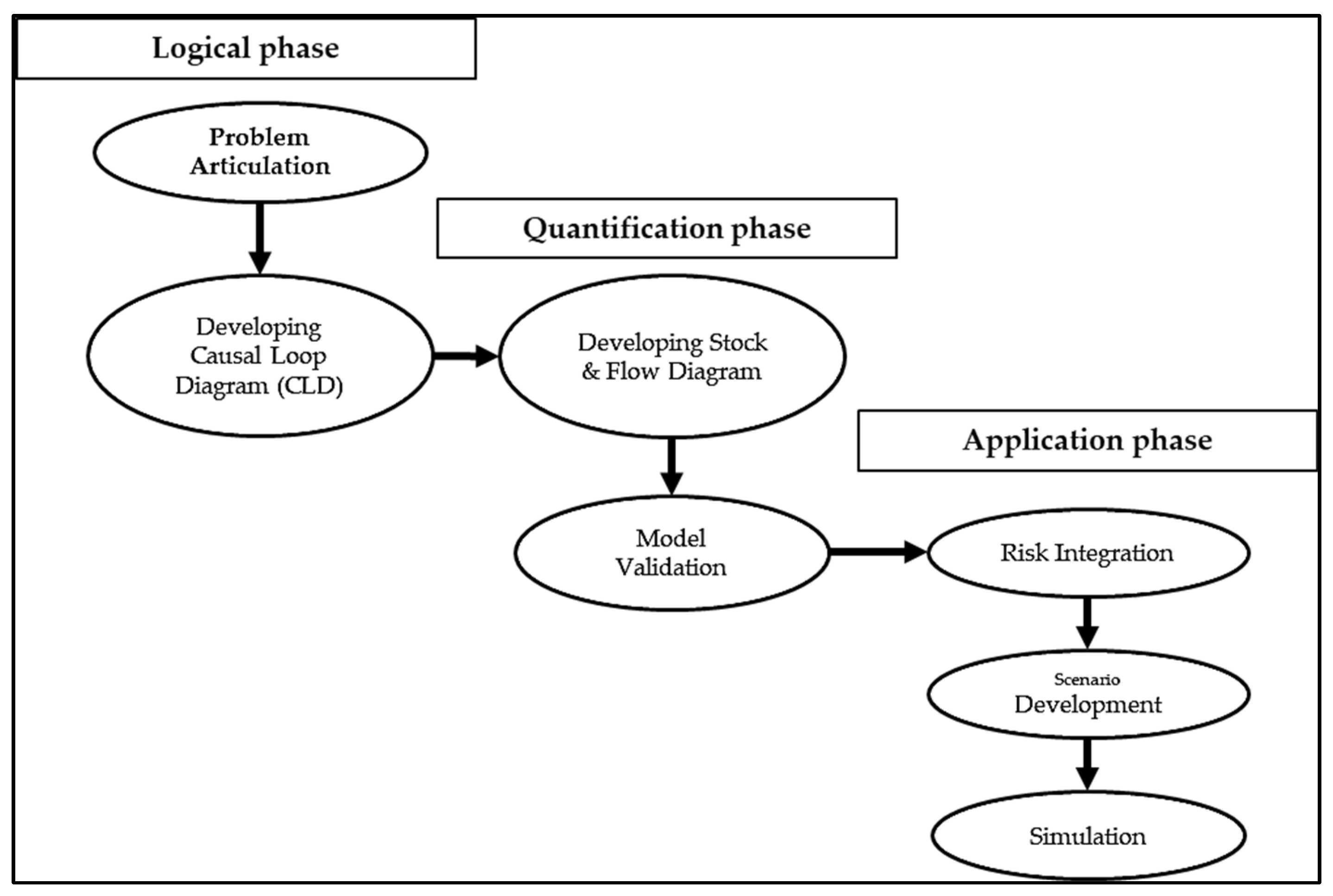




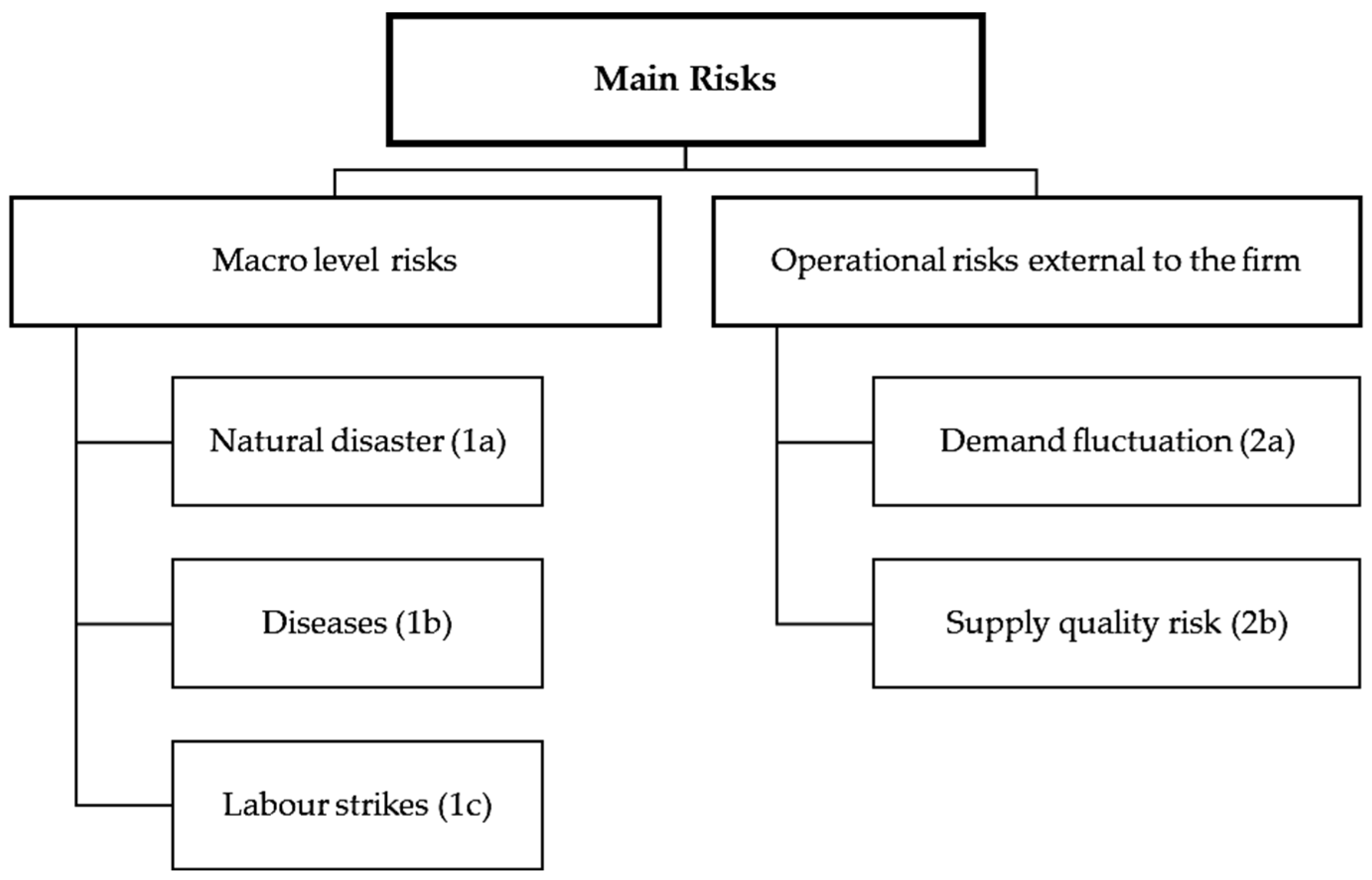
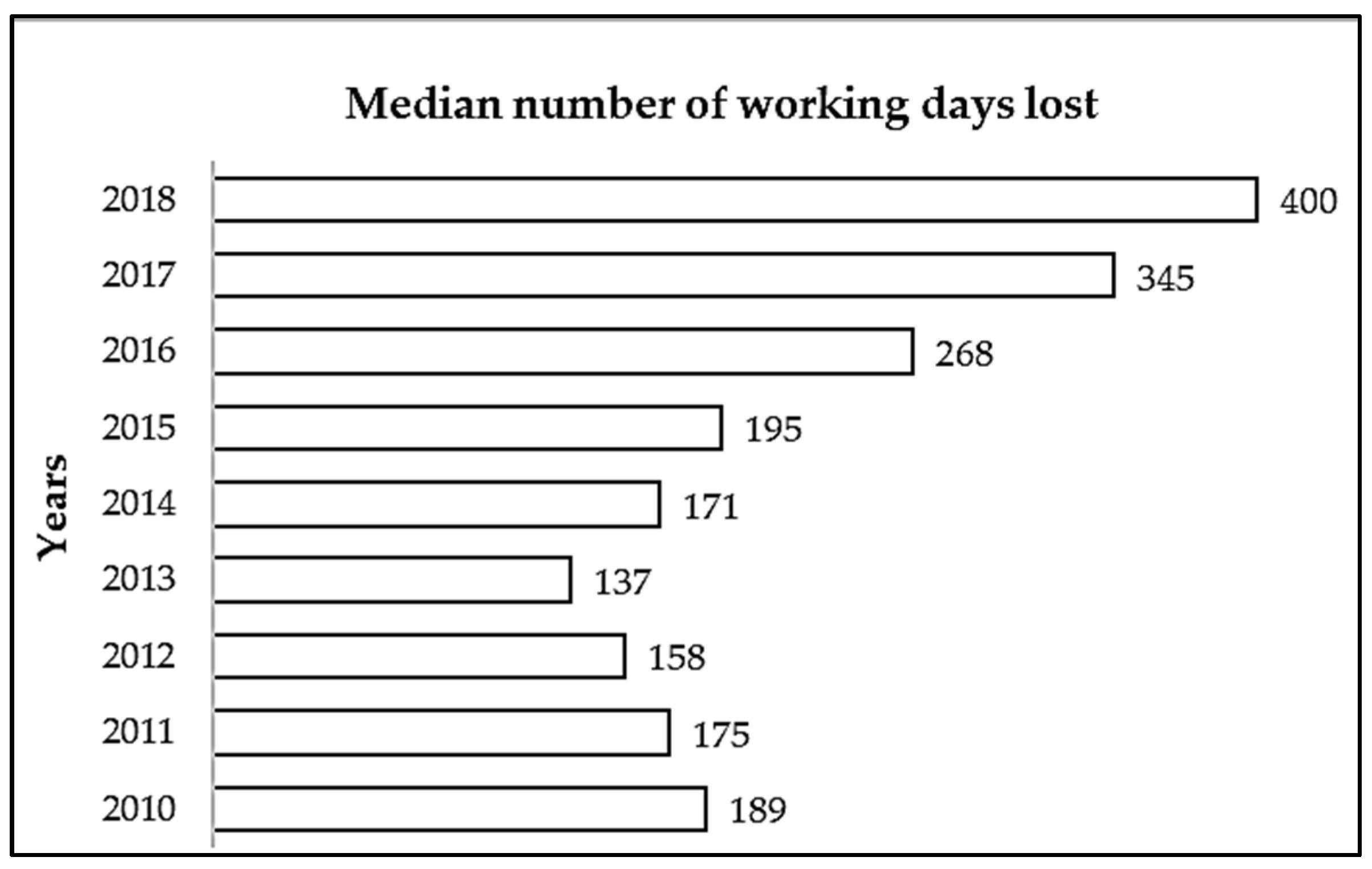
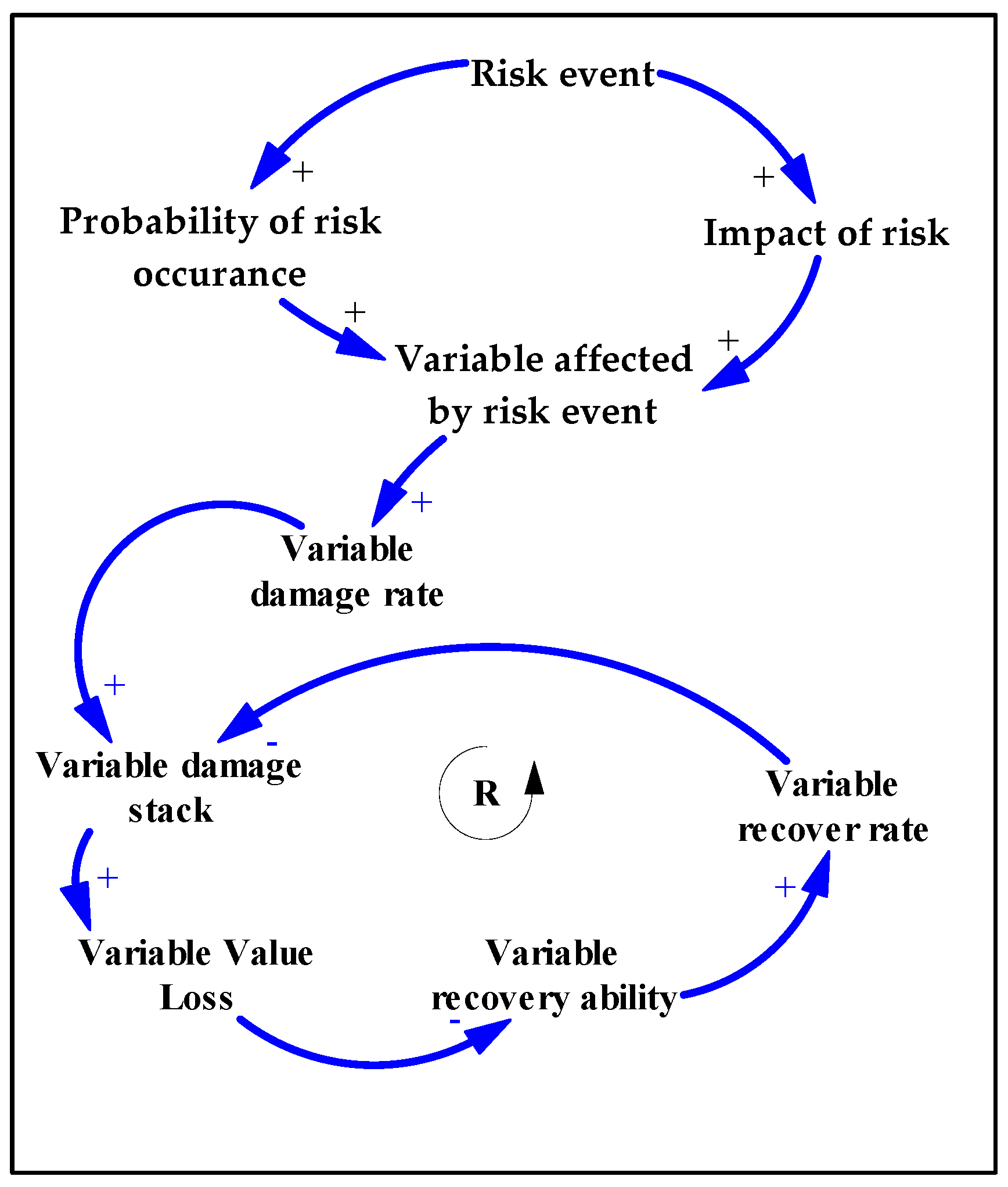



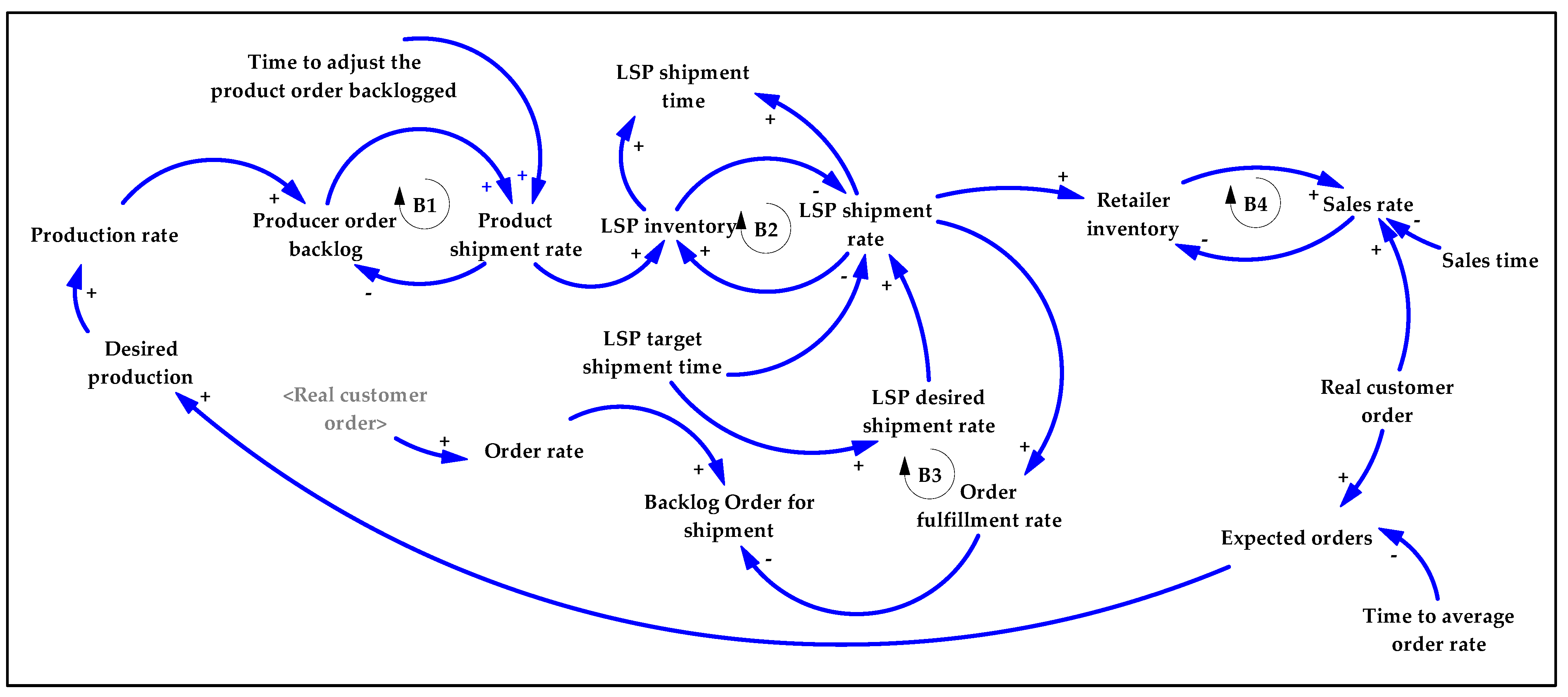

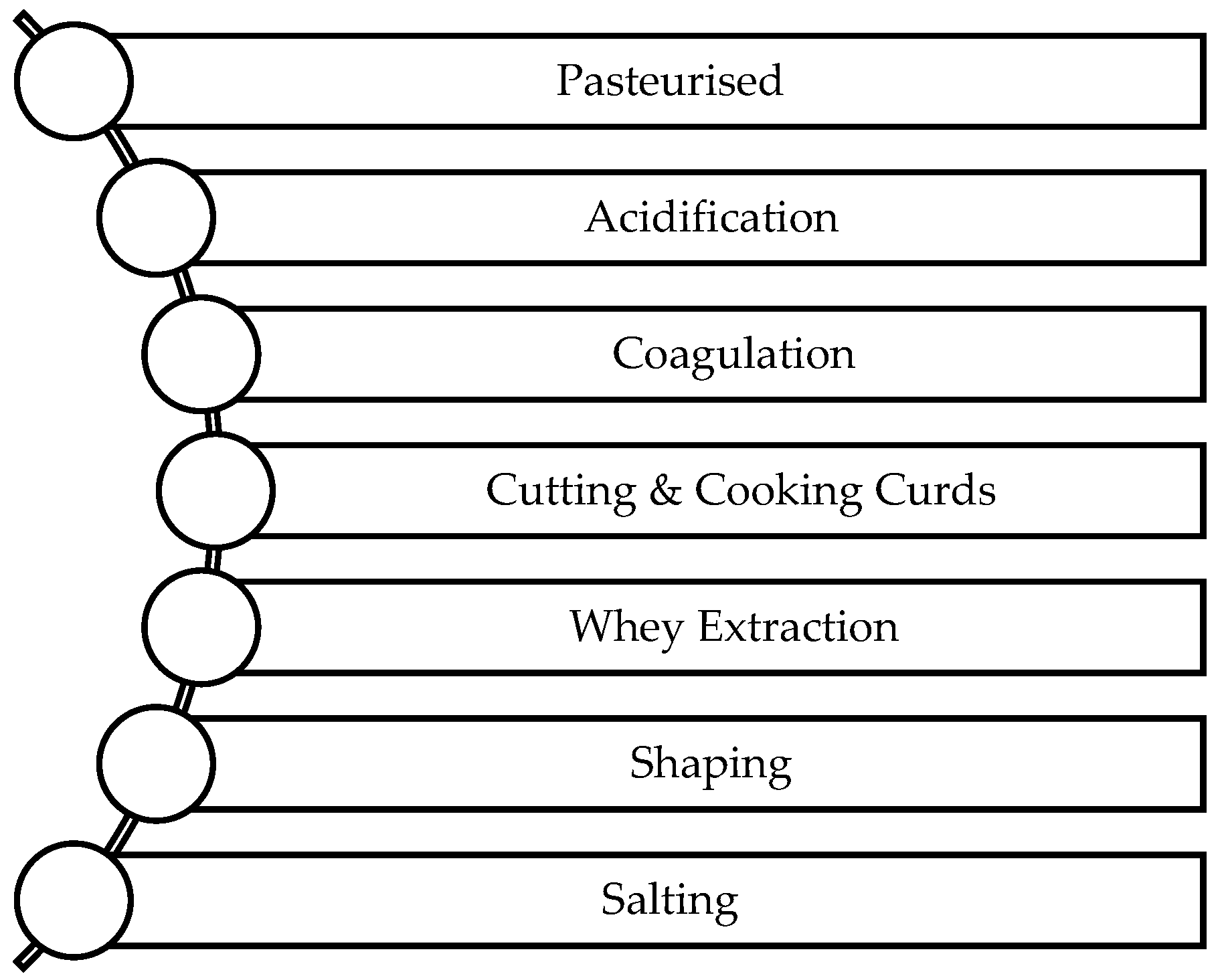



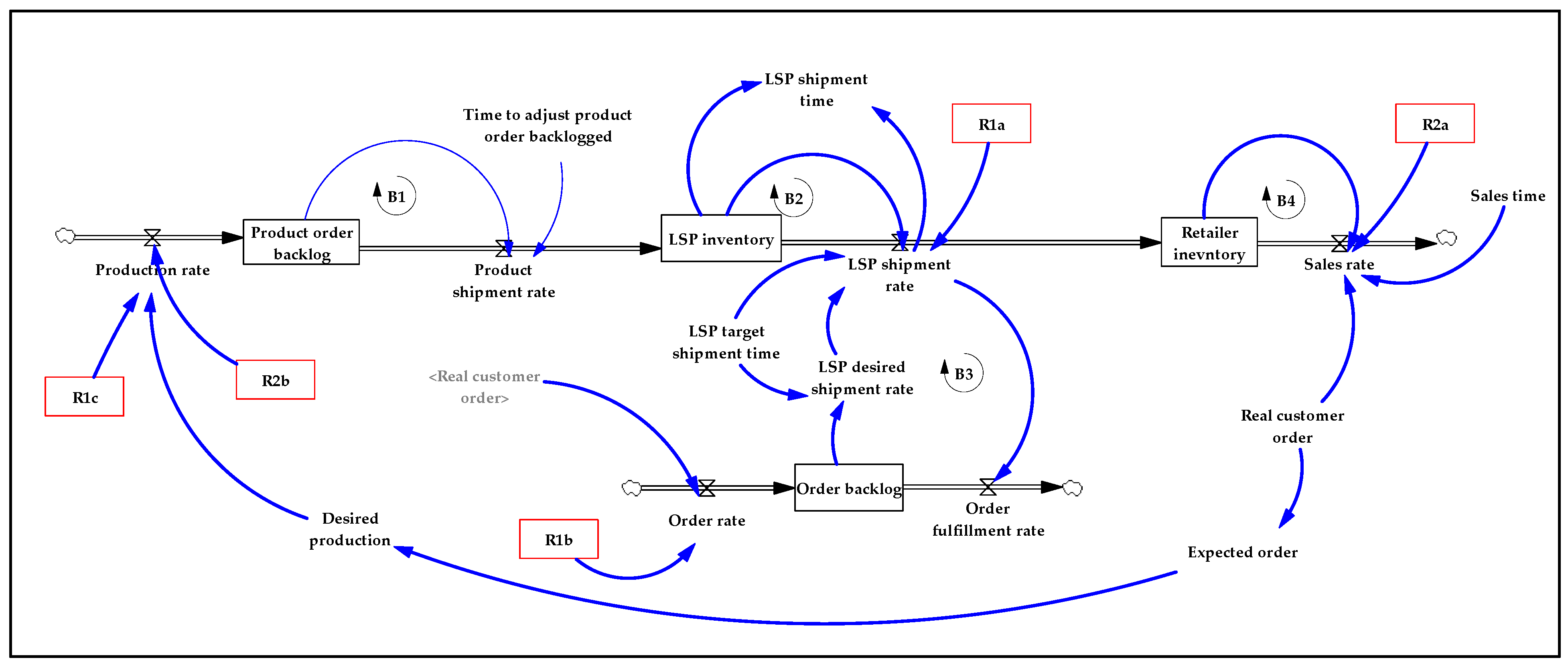
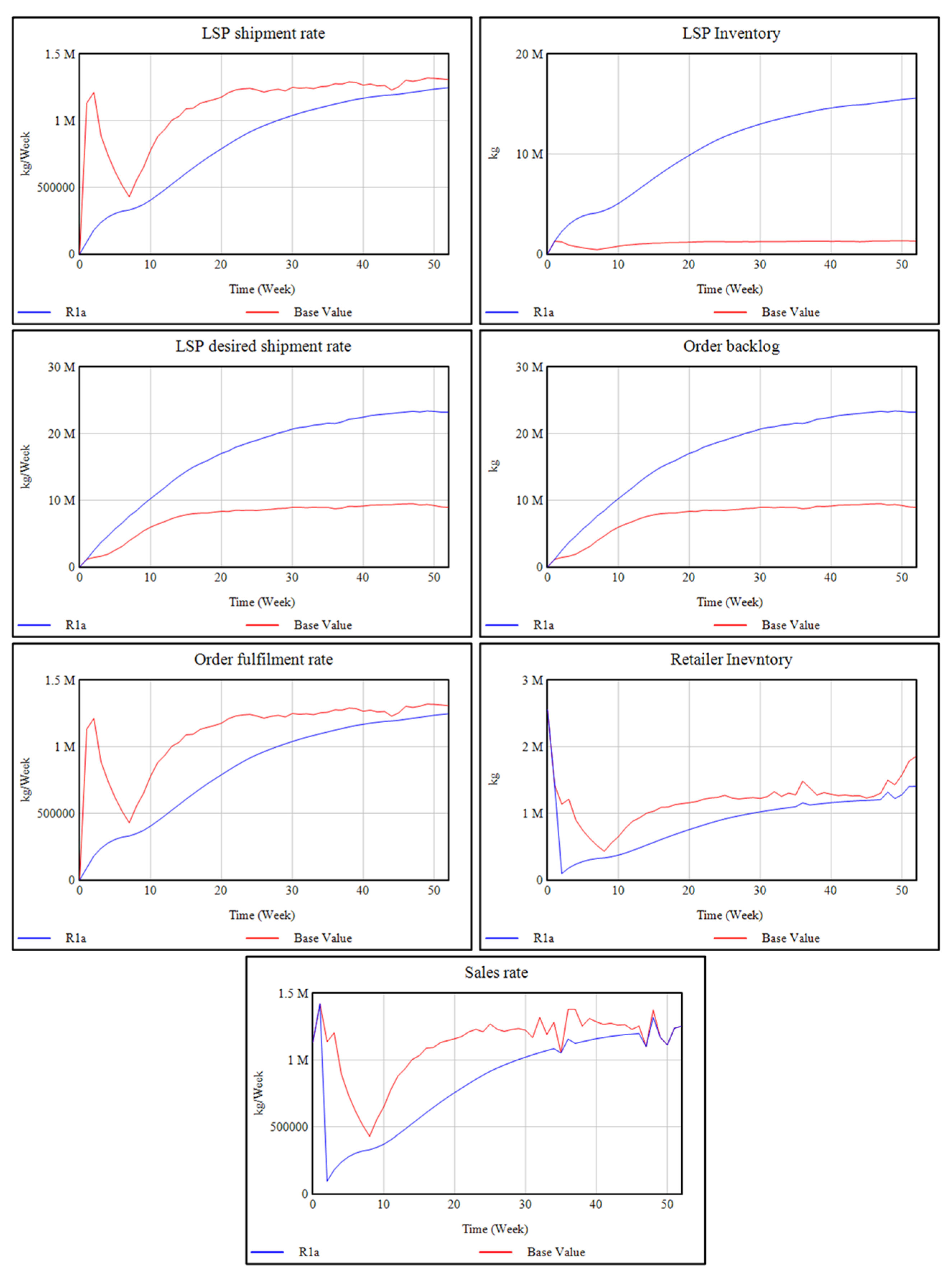


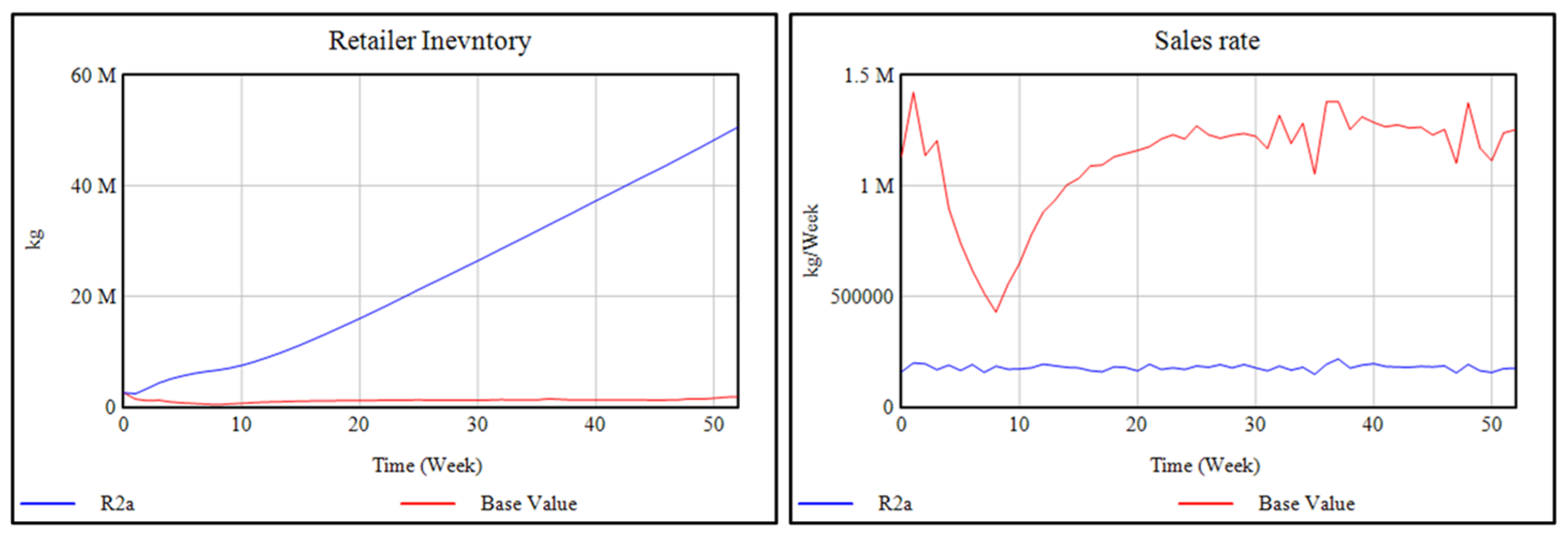
| Risks | Authors | Definitions |
|---|---|---|
| Natural disaster | Azizsafaei et al. [38] | Natural disasters, including disruptive events such as earthquakes, drought, floods, hurricanes, etc., that can negatively impact human lives and businesses. |
| Diseases | -- | The COVID-19 pandemic has explicitly been evaluated in this research. |
| Labour strikes | Gov. UK [63] | A labour strike includes work stoppage or refusal to continue to work by labour to compel employers to consider their terms/conditions and defend their rights. |
| Demand fluctuation | Ortiz-Barrios et al. [64] (p. 105) | “The failure to predict proper demand by a company leads to demand fluctuation between supply chain stages. This extends to bull-whip effect, which is a threat to economic growth”. |
| Supply quality risk | Chavez and Seow [65] (p. 2) | “A product’s quality risk/supply quality risk state in which it is affected by direct and indirect multi-tier suppliers’ materials, in which a minor risk incident can have a cumulative effect along the whole network”. |
| Value | Likelihood | Impact |
|---|---|---|
| 1 | Rare | Very low |
| 2 | Unlikely | Low |
| 3 | Moderate | Medium |
| 4 | Likely | High |
| 5 | Almost Certain | Very high |
| Risks | Symbol | Likelihood | Impact |
|---|---|---|---|
| Natural disaster | 1a | 10% | 0.8 |
| Diseases | 1b | 10% | 0.4 |
| Labour strikes | 1c | 30% | 0.2 |
| Demand fluctuation | 2a | 70% | 0.2 |
| Supply quality risk | 2b | 50% | 0.4 |
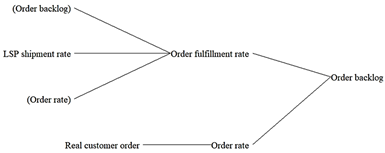 |  |
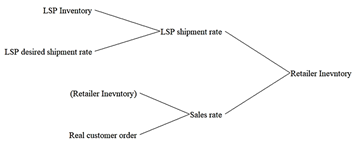 | 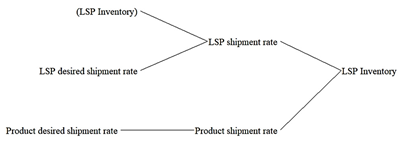 |
| Variable Name/Type | Variable Name/Type | Variable Name | |||
|---|---|---|---|---|---|
| Producer | Logistics Service Provider | Retailer | |||
| Production rate | F | LSP inventory | S | Retailer inventory | S |
| Producer order backlog | S | LSP shipment rate | F | Sales rate | F |
| Product shipment rate | F | LSP shipment time | A | Real customer demand rate | A |
| Time to adjust production order | A | LSP desired shipment rate | A | Expected order | A |
| Desired production | A | Order rate | F | Time to average order rate | A |
| Order backlog | S | Sales time | A | ||
| Order fulfilment rate | F | ||||
| Variables | Unit | Equation |
|---|---|---|
| Production rate | Kg/Week | DELAY FIXED (Desired production, 6, 0) |
| Product order backlog | Kg | INTEG (Production Rate − Production shipment rate) |
| Product shipment rate | Kg/Week | Product order backlog/Time to adjust product backlogged order |
| LSP inventory | Kg | INTEG (Product shipment rate-LSP shipment rate) |
| LSP shipment time | Week | INTEG (LSP Inventory/LSP shipment rate) |
| LSP shipment rate | Kg/Week | MIN (LSP desired shipment rate, LSP Inventory/LSP target shipment time) |
| LSP desired shipment rate | Kg/Week | Order backlog/LSP target shipment time |
| Order backlog | Kg | INTEG (Order rate − Order fulfilment rate) |
| Order fulfilment rate | Kg/Week | LSP shipment rate + Order backlog/Order rate |
| Expected order rate | Kg/Week | SMOOTH (Real customer order rate, Time to average order rate) |
| Retailer Inventory | Kg | INTEG (LSP shipment rate − Sales rate) |
| Sales rate | Kg/Week | MIN (Expected order rate, Retailer Inventory/Retailer sales time) |
| Risk Event | - | Probability × Impact |
| Simulation Input | Value |
|---|---|
| Product order backlog | 7.68 × 106 Kg |
| Retailer Inventory | 2.56 × 106 Kg |
| LSP inventory | 1 Kg |
| Real customer order | RANDOM NORMAL (9.8 × 105, 1.58 × 106, 1.28 × 106, 1.00 × 105, 1) kg/week |
| Order backlog | 1 Kg |
| Time to average order rate | 1 Week |
| LSP target shipment time | 1 Week |
| Retailer sales time | 1 Week |
| Time to adjust product order | 6 Week |
| Timestep | 1 Week |
| Simulation period | 52 Weeks |
| Risk Event | Code | Interactions between Risks and Supply Chain Loops |
|---|---|---|
| Natural disaster | 1a | (1) R1a→LSP shipment rate→Order fulfilment rate→ Order backlogged→LSP desired shipment rate (2) R1a→ LSP shipment rate→LSP inventory (3) R1a→LSP shipment rate→Retailer inventory→Sales rate |
| Diseases | 1b | (1) R1b→Order rate→Order backlogged→Order fulfilment (2) R1b→Order rate→Order backlog→LSP desired shipment rate→LSP shipment rate |
| Labour strikes | 1c | (1) R1c→Production rate→Product order backlog rate→Product shipment rate→LSP inventory→LSP shipment rate→Retailer inventory→Sales rate (2) R1c→Production rate→Product order backlog rate→Product shipment rate→LSP inventory→LSP shipment rate→Retailer inventory→Sales rate |
| Demand fluctuation | 2a | R2a→Sales rate→Retailer inventory |
| Supply quality risk | 2b | (1) R2b→Production rate→Product order backlog rate→Product shipment rate→ LSP inventory→LSP shipment rate→Retailer inventory→Sales rate (2) R2b→Production rate→Product order backlog rate→Product shipment rate→LSP inventory→LSP shipment rate→Retailer inventory→Sales rate |
| Scenarios | |||||
|---|---|---|---|---|---|
| S1 | S2 | S3 | S4 | S5 | |
| Production rate | - | - | |||
| Order rate | - | ||||
| LSP shipment rate | - | ||||
| Sales rate | - | ||||
| LSP Shipment Rate | LSP Inventory | LSP Desired Shipment Rate | Order Fulfilment Rate | Order Backlog | Sales Rate | Retailer Inventory | Production Rate | Product Order Backlog | Product Shipment Rate | |||||||||||
|---|---|---|---|---|---|---|---|---|---|---|---|---|---|---|---|---|---|---|---|---|
| Base value | Max | 1.32 × 106 | Max | 1.32 × 106 | Max | 9.49 × 106 | Max | 1.32 × 106 | Max | 9.49 × 106 | Max | 1.38 × 106 | Max | 1.86 × 106 | Max | 1.55 × 106 | Max | 7.93 × 106 | Max | 1.32 × 106 |
| Min | 4.29 × 105 | Min | 4.29 × 105 | Min | 1.13 × 106 | Min | 4.29 × 105 | Min | 1.42 × 106 | Min | 4.29 × 105 | Min | 4.29 × 105 | Min | 0 | Min | 2.57 × 106 | Min | 4.29 × 105 | |
| Ave | 1.13 × 106 | Ave | 1.13 × 106 | Ave | 7.60 × 106 | Ave | 1.13 × 106 | Ave | 7.72 × 106 | Ave | 1.11 × 106 | Ave | 1.17 × 106 | Ave | 1.15 × 106 | Ave | 6.76 × 106 | Ave | 1.13 × 106 | |
| R1a | Max | 1.25 × 106 | Max | 1.56 × 107 | Max | 2.34 × 107 | Max | 1.25 × 106 | Max | 2.34 × 107 | Max | 1.42 × 106 | Max | 1.43 × 106 | Max | 1.55 × 106 | Max | 7.93 × 106 | Max | 1.32 × 106 |
| Min | 9.07 × 104 | Min | 1.28 × 106 | Min | 1.13 × 106 | Min | 9.07 × 104 | Min | 1.13 × 106 | Min | 9.45 × 104 | Min | 9.45 × 104 | Min | 0 | Min | 2.57 × 106 | Min | 4.29 × 105 | |
| Ave | 8.51 × 105 | Ave | 1.06 × 107 | Ave | 1.71 × 107 | Ave | 8.51 × 105 | Ave | 1.71 × 107 | Ave | 8.51 × 105 | Ave | 8.64 × 105 | Ave | 1.15 × 106 | Ave | 6.76 × 106 | Ave | 1.13 × 106 | |
| R1b | Max | 6.20 × 104 | Max | 5.60 × 107 | Max | 6.20 × 104 | Max | 6.20 × 104 | Max | 6.20 × 104 | Max | 1.42 × 106 | Max | 1.43 × 106 | Max | 1.55 × 106 | Max | 7.93 × 106 | Max | 1.32 × 106 |
| Min | 4.21 × 104 | Min | 1.28 × 106 | Min | 4.21 × 104 | Min | 4.21 × 104 | Min | 4.21 × 104 | Min | 4.21 × 104 | Min | 4.21 × 104 | Min | 0 | Min | 2.57 × 106 | Min | 4.29 × 105 | |
| Ave | 5.09 × 104 | Ave | 2.60 × 107 | Ave | 5.09 × 104 | Ave | 5.09 × 104 | Ave | 5.09 × 104 | Ave | 7.74 × 104 | Ave | 7.75 × 104 | Ave | 1.15 × 106 | Ave | 6.476 × 106 | Ave | 1.13 × 106 | |
| R1c | Max | 1.21 × 106 | Max | 1.28 × 106 | Max | 5.56 × 107 | Max | 1.21 × 106 | Max | 5.56 × 107 | Max | 1.42 × 106 | Max | 1.43 × 106 | Max | 9.30 × 104 | Max | 6.40 × 106 | Max | 1.07 × 106 |
| Min | 7.43 × 104 | Min | 7.43 × 104 | Min | 1.13 × 106 | Min | 7.43 × 104 | Min | 1.13 × 106 | Min | 7.43 × 104 | Min | 7.43 × 104 | Min | 0 | Min | 4.46 × 105 | Min | 7.43 × 104 | |
| Ave | 2.06 × 105 | Ave | 2.09 × 105 | Ave | 2.58 × 107 | Ave | 2.06 × 105 | Ave | 2.58 × 107 | Ave | 2.32 × 105 | Ave | 2.33 × 105 | Ave | 6.93 × 104 | Ave | 1.10 × 106 | Ave | 1.83 × 105 | |
| R2a | Max | 1.32 × 106 | Max | 1.32 × 106 | Max | 9.49 × 106 | Max | 1.32 × 106 | Max | 9.49 × 106 | Max | 2.17 × 104 | Max | 5.06 × 107 | Max | 1.55 × 106 | Max | 7.93 × 106 | Max | 1.32 × 106 |
| Min | 4.29 × 105 | Min | 4.29 × 105 | Min | 1.13 × 106 | Min | 4.29 × 105 | Min | 1.13 × 106 | Min | 1.47 × 104 | Min | 2.40 × 106 | Min | 0 | Min | 2.57 × 106 | Min | 4.29 × 105 | |
| Ave | 1.13 × 106 | Ave | 1.13 × 106 | Ave | 7.60 × 106 | Ave | 1.13 × 106 | Ave | 7.60 × 106 | Ave | 1.79 × 104 | Ave | 2.40 × 107 | Ave | 1.15 × 106 | Ave | 6.76 × 106 | Ave | 1.13 × 106 | |
| R2b | Max | 1.21 × 106 | Max | 1.28 × 106 | Max | 4.86 × 107 | Max | 1.21 × 106 | Max | 4.86 × 107 | Max | 1.42 × 106 | Max | 1.43 × 106 | Max | 3.10 × 105 | Max | 6.40 × 106 | Max | 1.07 × 106 |
| Min | 2.46 × 105 | Min | 2.46 × 105 | Min | 1.13 × 106 | Min | 2.46 × 105 | Min | 1.13 × 106 | Min | 2.46 × 105 | Min | 2.46 × 105 | Min | 0 | Min | 1.48 × 106 | Min | 2.46 × 105 | |
| Ave | 3.43 × 105 | Ave | 3.46 × 105 | Ave | 2.31 × 107 | Ave | 3.43 × 105 | Ave | 2.31 × 107 | Ave | 3.66 × 105 | Ave | 3.66 × 105 | Ave | 2.31 × 105 | Ave | 1.94 × 106 | Ave | 3.54 × 105 | |
| LSP Shipment Rate | LSP Inventory | LSP Desired Shipment Rate | Order Fulfilment Rate | Order Backlog | Sales Rate | Retailer Inventory | Production Rate | Product Order Backlog | Product Shipment Rate | |
|---|---|---|---|---|---|---|---|---|---|---|
| R1a | −24% | 842% | 125% | −24% | 121% | −23% | −26% | 0% | 0% | 0% |
| R1b | −95% | 2199% | −99% | −95% | −99% | −93% | −93% | 0% | 0% | 0% |
| R1c | −82% | −81% | 239% | −82% | 234% | −79% | −80% | −94% | −84% | −84% |
| R2a | 0% | 0% | 0% | 0% | −2% | −84% | 1949% | 0% | 0% | 0% |
| R2b | −70% | −69% | 204% | −70% | 199% | −67% | −69% | −80% | −71% | −71% |
Publisher’s Note: MDPI stays neutral with regard to jurisdictional claims in published maps and institutional affiliations. |
© 2022 by the authors. Licensee MDPI, Basel, Switzerland. This article is an open access article distributed under the terms and conditions of the Creative Commons Attribution (CC BY) license (https://creativecommons.org/licenses/by/4.0/).
Share and Cite
Azizsafaei, M.; Hosseinian-Far, A.; Khandan, R.; Sarwar, D.; Daneshkhah, A. Assessing Risks in Dairy Supply Chain Systems: A System Dynamics Approach. Systems 2022, 10, 114. https://doi.org/10.3390/systems10040114
Azizsafaei M, Hosseinian-Far A, Khandan R, Sarwar D, Daneshkhah A. Assessing Risks in Dairy Supply Chain Systems: A System Dynamics Approach. Systems. 2022; 10(4):114. https://doi.org/10.3390/systems10040114
Chicago/Turabian StyleAzizsafaei, Maryam, Amin Hosseinian-Far, Rasoul Khandan, Dilshad Sarwar, and Alireza Daneshkhah. 2022. "Assessing Risks in Dairy Supply Chain Systems: A System Dynamics Approach" Systems 10, no. 4: 114. https://doi.org/10.3390/systems10040114







